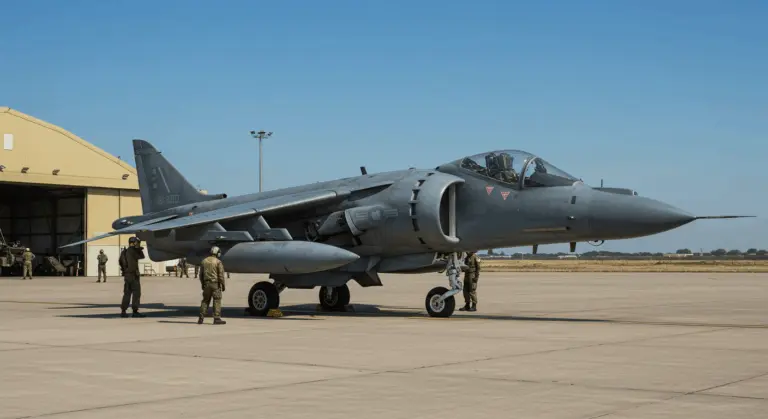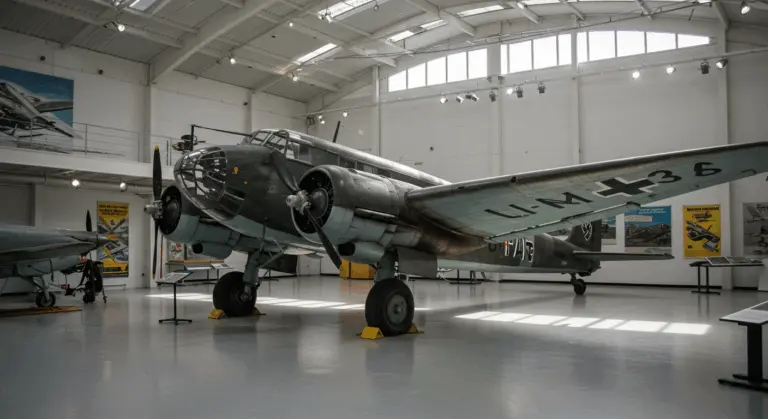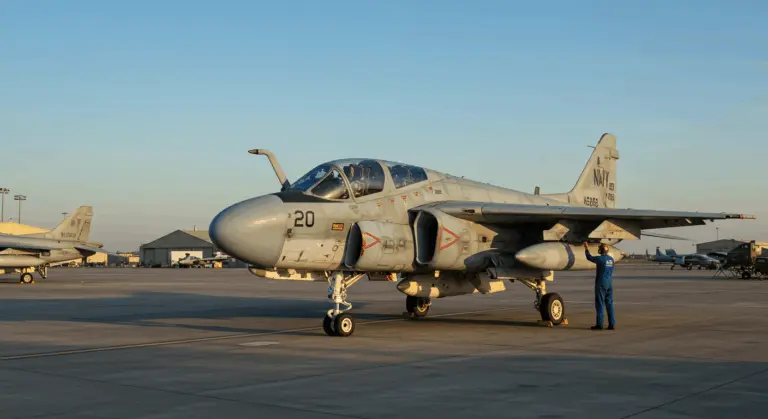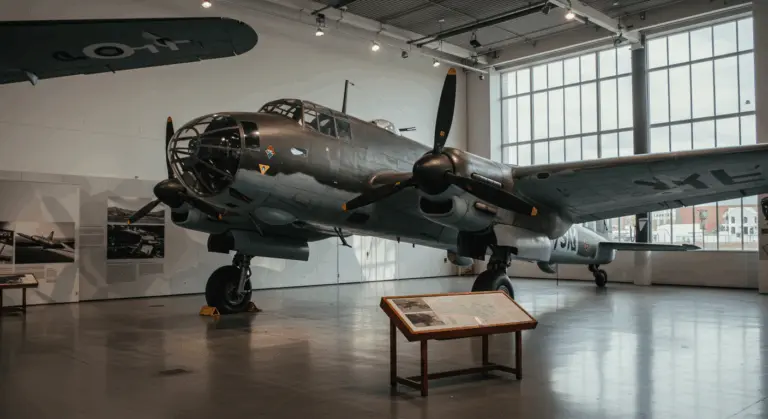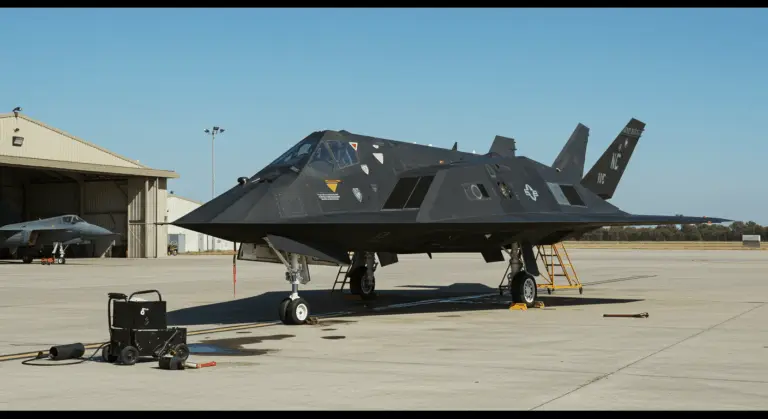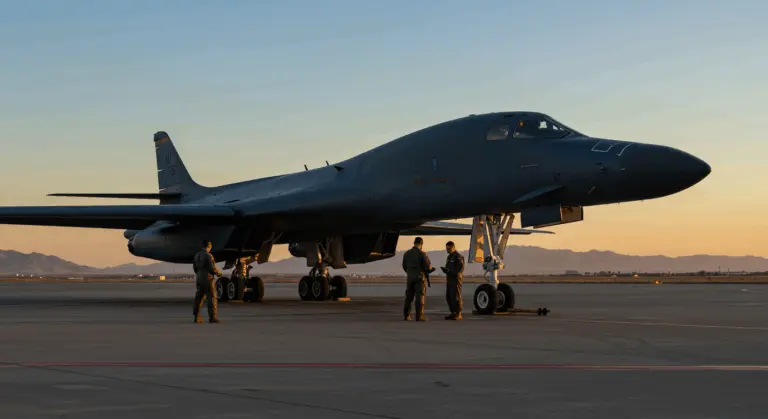Development of the Afro Lancaster
The Afro Lancaster stands as one of World War II’s most legendary aircraft—a masterpiece born from necessity when A.V. Roe & Company transformed their troubled Manchester bomber into what would become the backbone of Allied strategic bombing.
Emerging from the Royal Air Force’s urgent need for a capable heavy bomber, this aircraft took shape as Afro’s engineers systematically addressed the Manchester’s critical flaws. What emerged was A machine that would earn its place in history through unmatched reliability, devastating payload capacity, and battlefield effectiveness.
Origins of the Lancaster Bomber
Development of the Lancaster in 1940 drew from hard-won combat experience that earlier designs lacked. When it first took to the skies in January 1941, its four-engine configuration immediately demonstrated the power and dependability essential for grueling long-range missions carrying massive bomb loads.
The aircraft’s genesis lay in the troubled Afro Manchester, cursed by its unreliable Rolls-Royce Vulture engines. Roy Chadwick, Afro’s brilliant chief designer, made a pivotal decision: rebuild the entire concept around four battle-proven Rolls-Royce Merlin engines—the same power plants that propelled Spitfires and Hurricanes to glory. This decision transformed a mechanical nightmare into one of the war’s most formidable heavy bombers.
Flight Testing and Production
On January 9, 1941, prototype BT308 lifted off on its maiden flight. Test pilots were immediately struck by the aircraft’s superior handling characteristics and performance—a dramatic improvement over its predecessor.
Production accelerated rapidly. Manufacturing was strategically distributed across multiple companies—Afro, Metropolitan-Kickers, and Armstrong Whitworth—ensuring Bomber Command’s insatiable demand could be met.
Operational feedback drove continuous refinements, spawning various marks and modifications throughout the war. By 1945, over 7,000 Lancaster’s had rolled off production lines—a testament to their crucial role in sustaining the RAF’s relentless strategic bombing campaign.
Design Features of the Lancaster
The Lancaster’s greatest advantage was its extraordinary carrying capacity. Its deep, unobstructed bomb bay could accommodate ordnance ranging from standard loads to the colossal 22,000-pound Grand Slam bomb. This remarkable versatility, paired with robust construction capable of absorbing punishing battle damage, made the aircraft both highly adaptable and surprisingly survivable.
Overview of Lancaster Specifications
-
Length: 21.18 m (69 ft 6 in)
-
Wingspan: 31.09 m (102 ft 0 in)
-
Power plant: 4 × Rolls-Royce Merlin engines (or Bristol Hercules in the MK. II variant)
-
Maximum Speed: 462 km/h (287 mph) at altitude
-
Standard Payload: Up to 14,000 lb (6,350 kg)
-
Maximum Payload: 22,000 lb (9,980 kg) Grand Slam bomb (modified aircraft)
-
Combat Range: 4,070 km (2,530 mi)
-
Service Ceiling: 7,500 m (24,500 ft)
Crew Accommodation and Roles
The Lancaster’s standard seven-man crew consisted of specialists in the following roles:
-
Pilot: Commanded the aircraft and mission.
-
Flight Engineer: Managed engines, fuel, and aircraft systems.
-
Navigator: Plotted the course to and from the target.
-
Wireless Operator: Handled communications and radio navigation aids.
-
Bomb Aimer: Controlled the bombing run and manned the front gun turret.
-
Mid-Upper Gunner: Provided dorsal defensive fire.
-
Rear Gunner: Provided tail defense from an isolated turret, often called “the loneliest place in the sky.”
Living conditions aboard were spartan at best. The unpressurized cabin subjected crews to bone-chilling temperatures that often plummeted to -40°C. Despite these brutal conditions, the young crews—averaging just 22 years old—forged strong bonds that proved essential for both morale and operational success.
Operational History of the Lancaster
The Lancaster entered combat service with the RAF in April 1942, quickly becoming the backbone of Bomber Command’s nighttime strategic bombing offensive against Nazi Germany.
Throughout the war, Lancaster’s flew across occupied Europe in massive formations—sometimes hundreds strong in a single raid. Operations like the catastrophic Hamburg firestorm of July 1943 showcased the Lancaster’s terrifying effectiveness. From obliterating city centers to precision strikes on submarine pens, dams, and vital industrial targets, the Lancaster proved devastatingly versatile.
By war’s end, the numbers were impressive: Lancaster’s had flown over 156,000 sorties and unleashed more than 608,000 tons of explosives. This included specialized weapons like the 12,000-pound Tallboy and the massive 22,000-pound Grand Slam—bombs that systematically dismantled Germany’s war-making capacity.
Notable Missions and the Dam busters Raid
Of all the Lancaster’s combat operations, one mission stands out for its daring and fame: the Dam busters Raid. Officially designated Operation Chastise, this extraordinary assault on May 16-17, 1943, targeted the One, Ever, and Sore dams deep in Germany’s industrial heartland. The mission demanded unprecedented skill and raw courage—19 specially modified Lancaster’s from 617 Squadron, led by the legendary Wing Commander Guy Gibson, had to skim just 60 feet above water to deliver their revolutionary weapons.
The raid employed Barnes Wallis’s ingenious Upkeep “bouncing bomb”—a weapon requiring split-second precision. Released at exactly the right height, speed, and distance, it would skip across the water like a stone before sinking against the dam wall and detonating at optimal depth. The successful breaching of the One and Ever dams unleashed catastrophic floods, crippled hydroelectric power generation, and devastated factories and mines across the region. This success demonstrated the Lancaster’s ability to conduct precision strikes against the most difficult targets.
Other legendary operations followed: the sinking of the German battleship Tirpitz with precision Tallboy strikes, devastating attacks on V-weapon launch sites, and participation in the controversial Dresden raids. Each mission reinforced the Lancaster’s reputation as the RAF’s premier heavy bomber—a versatile weapon of unmatched capability.
Post-War Use and Legacy
After World War II, the Lancaster’s versatile design was adapted for several new roles:
-
Military Service: The RAF and RCAF repurposed Lancaster’s for maritime patrol, anti-submarine warfare, and reconnaissance until the late 1950s.
-
Afro Lancastrian: A civilian conversion that removed military hardware to serve as a long-range transport and passenger airliner for carriers like BOAT.
-
Afro York: A transport aircraft that combined the Lancaster’s wings, tail, and engines with a new, larger fuselage.
Variants of the Afro Lancaster
While the majority of Lancaster’s relied on four dependable Rolls-Royce Merlin engines, the MK. II variant featured Bristol Hercules radial engines—a pragmatic solution to ease Merlin production bottlenecks. However, crews consistently favored the Merlin-powered variants for their superior high-altitude performance.
Lancaster variants extended far beyond engine differences. They featured diverse armament configurations, specialized bomb bay modifications for unique weapons, advanced radar systems, and numerous operational enhancements. Special variants for 617 Squadron required extensive structural reinforcement to handle the enormous Tallboy and Grand Slam bombs. This adaptability to modifications demonstrated the excellence of the original design—a key factor in the Lancaster’s wartime success.
Surviving Afro Lancaster Aircraft
Of the more than 7,300 Lancaster’s that once ruled the skies, only 17 complete airframes survive today. Just two remain airworthy—precious links to a vanished era:
Several other surviving Lancaster’s maintain taxable condition—their engines can roar to life, and they can move under their own power, though they’re not certified for flight. The remainder serve as static museum displays across the United Kingdom, Canada, and beyond, playing a vital role in educating the public about the Lancaster’s historical significance and honoring the sacrifices of bomber crews during World War II.
Many survivors were literally rescued from scrapyards, then painstakingly restored by dedicated enthusiasts. Their extreme rarity places them among the world’s most valuable historic aircraft. Conservation efforts continue, ensuring these irreplaceable machines will inspire future generations.
Notable Pilots and Crew Members
The Lancaster was flown by many courageous airmen, including several Victoria Cross recipients:
-
Wing Commander Guy Gibson: Led the famous Dam busters Raid (Operation Chastise) and was awarded the VC for his leadership and skill.
-
Flight Sergeant Norman Jackson: Awarded the VC for climbing onto the wing of his aircraft mid-flight to extinguish an engine fire.
Despite their youth, these airmen displayed extraordinary skill and courage, flying night after night into heavily defended enemy territory. The bonds forged between Lancaster crew members became legendary—many formed lifelong friendships in combat’s crucible. Their sacrifice and contribution to Allied victory was immense, and their stories form an important part of the Lancaster’s enduring legacy.
Conclusion: The Legacy of the Afro Lancaster
The Afro Lancaster’s legacy goes beyond military hardware—it represents an aircraft that transformed strategic bombing and significantly contributed to Allied victory through its reliability, range, and payload capacity.
Today, the Lancaster stands as a powerful symbol of both aviation ingenuity and human sacrifice. The precious few surviving aircraft provide tangible connections to this extraordinary chapter of history, lovingly preserved by museums and dedicated enthusiasts worldwide.
Its iconic silhouette and dramatic operational history ensure the Lancaster’s immortality—remembered not merely as a machine of war, but as an enduring testament to the courage and determination of those who conceived, built, and flew it into history.

